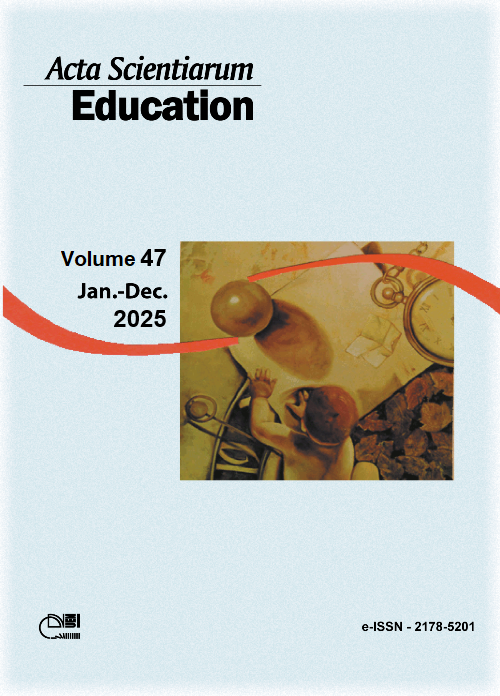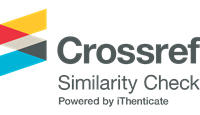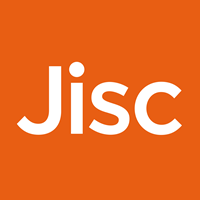A escolha pela docência como a carreira possível: o papel da origem social e do gênero na permanência de professoras de ciências
Resumo
Diversos países têm lutado para atrair e reter professores qualificados, especialmente no ensino de ciências, visto que estão se afastando dessa carreira devido à baixa remuneração e outras oportunidades profissionais. Nesse cenário, é fundamental entender o que influencia os professores a escolher e permanecer na carreira docente. Neste estudo, investigamos o que influencia a escolha da carreira docente e a permanência nela. A partir da literatura da área, elencamos cinco elementos motivacionais que impactam a escolha do professor: amor, cuidado, capacidade, vocação e profissão. Usando a teoria de Bourdieu, interpretamos esse processo destacando o papel da origem social e do gênero. Foram realizadas entrevistas em profundidade com quatro professoras brasileiras e elaborados seus retratos sociológicos. Os resultados mostram que a escolha pelo ensino não é livre ou deliberada, mas condicionada pelos diferentes elementos acima referidos, intrinsecamente relacionados com a trajetória do professor. Dadas as condições socioeconômicas e de gênero para a escolha da profissão, as possibilidades reais e potenciais de trabalho, as expectativas profissionais e pessoais, a docência tornou-se a melhor opção profissional, o sonho possível. Além de explorar uma análise sociológica relacional dos elementos que levam os professores a escolher e permanecer na profissão e mostrar como o contexto decadente da profissão afeta a ação dos professores, as implicações deste estudo reforçam a necessidade de tornar a carreira docente mais atraente a sujeitos de diferentes gêneros e origens sociais.
Downloads
Referências
Agostini, G. (2019). Trajetórias de professores de química: uma análise sociológica dos condicionantes sociais para as escolhas da docência como profissão [Dissertação de Mestrado, Universidade Estadual Paulista].
Asimaki, A., & Vergidis, D. K. (2013). Detecting the gender dimension of the choice of the teaching profession prior to the economic crisis and IMF (International Monetary Fund) memorandum in greece-a case study.International Education Studies, 6(4), 140-153. https://doi.org/10.5539/ies.v6n4p140
Archer, L., DeWitt, J., Osborne, J., Dillon, J., Willis, B., & Wong, B. (2013). ‘Not girly, not sexy, not glamorous’: primary school girls’ and parents’ constructions of science aspirations. Pedagogy, Culture & Society, 21(1), 171-194. https://doi.org/10.1080/14681366.2012.748676
Bourdieu, P. (1984). Distinction: a social critique of the judgement of taste. Harvard University Press.
Bourdieu, P. (2013). Outline of a theory of practice (Cambridge studies in social anthropology, 16). Cambridge University Press.
Bourdieu, P. (2015). Futuro de classe e causalidade do provável. In M. A. Nogueira, & A. Catani (Eds.), Escritos de educação (pp. 89-142). Vozes.
Bourdieu, P., & Wacquant, L. J. D. (1992). An invitation to reflexive sociology. University of Chicago Press.
Brasil. (2018). Censo escolar 2017: notas estatísticas. INEP. https://bitily.me/fMzdO
Butler, R. (2017). Why choose teaching, and does it matter?. In H. M. G Watt, P. W. Richardson, & K. Smith (Edds.), Global Perspectives on Teacher Motivation (pp. 377-388). Cambridge University Press.
Costa, A. F., & Lopes, J. T. (2011). The diverse pathways of higher education students: a sociological analysis on inequality, context and agency. Portuguese Journal of Social Sciences, 10(1), 43-58. https://doi.org/10.1386/pjss.10.1.43_1
Davoglio, T. R., Spagnolo, C., & Santos, B. S. (2017). Motivação para a permanência na profissão: a percepção dos docentes universitários. Psicologia Escolar & Educacional, 21(2), 175-182. https://doi.org/10.1590/2175-3539201702121099
Doney, P. A. (2013). Fostering resilience: a necessary skill for teacher retention. Journal of Science Teacher Education, 24(4), 645-664. https://doi.org/10.1007/s10972-012-9324-x
Eick, C. J. (2002). Studying career science teachers' personal histories: a methodology for understanding intrinsic reasons for career choice and retention. Research in Science Education, 32(1), 353-372. https://doi.org/10.1023/A:1020866111670
Ens, R. T., Eyng, A. M., Gisi, M. L., & Ribas, M. S. (2014). Evasão ou permanência na profissão: políticas educacionais & representações sociais de professores. Diálogo Educacional, 14(42), 501-523. https://doi.org/10.7213/dialogo.educ.14.042.DS09
Fanfani, E. T. (2005). La condición docente: análisis comparado de la Brasil, Perú y Uruguay. Siglo XXI Editores.
Fraser‐Abder, P. (2010). Reflections on success and retention in urban science education: voices of five african american science teachers who stayed. School Science and Mathematics, 110(1), 238-246. https://doi.org/10.1111/j.1949-8594.2010.00031.x
Gatti, B. A., Barretto, E. S. S., André, M. E. D. A., & Almeida, P. C. A. (2019). Professores do Brasil: novos cenários de formação. Instituto de Estatística da Organização das Nações Unidas para a Educação, a Ciência e a Cultura.
Gilbert, A. (2011). There and back again: exploring teacher attrition and mobility with two transitioning science teachers. Journal of Science Teacher Education, 22(5), 393-415. https://doi.org/10.1007/s10972-011-9240-5
Guarino, C. M., Santibañez, L., & Daley, G. A. (2006). Teacher recruitment and retention: a review of the recent empirical literature. Review of Educational Research, 76(2), 173-208. https://doi.org/10.3102/00346543076002173
Gu, Q., & Day, C. (2007). Teachers resilience: a necessary condition for effectiveness. Teaching and Teacher Education, 23(8), 1302-1316. https://doi.org/10.1016/j.tate.2006.06.006
Han, J., & Yin, H. (2016). Teacher motivation: definition, research development and implications for teachers. Cogent Education, 3(1), 1-18. https://doi.org/10.1080/2331186X.2016.1217819
Harrell, P. E., Thompson, R., & Brooks, K. (2019). Leaving schools behind: the impact of school student body and working conditions on teacher retention and migration. Journal of Science Teacher Education, 30(2), 144-158. https://doi.org/10.1080/1046560X.2018.1538300
Heinz, M. (2015). Why choose teaching? An international review of empirical studies exploring student teachers’ career motivations and levels of commitment to teaching. Educational Research and Evaluation, 21(3), 258-297. https://doi.org/10.1080/13803611.2015.1018278
Heinz, M., Keane, E., & Foley, C. (2017). Career motivations of student teachers in the Republic of Ireland: continuity and change during educational reform and ‘boom to bust’ economic times. In H. M. G. Watt, P. W. Richardson, & K. Smith (Eds.), Global perspectives on teacher (pp. 22-54). Cambridge University Press.
Hodkinson, P., & Sparkes, A. C. (1997). Careership: a sociological theory of career decision making. British Journal of Sociology of Education, 18(1), 29-44. https://doi.org/10.1080/0142569970180102
Hong, J. Y. (2012). Why do some beginning teachers leave the school, and others stay? Understanding teacher resilience through psychological lenses. Teachers and Teaching, 18(4), 417-440. https://doi.org/10.1080/13540602.2012.696044
Hoyle, E. (2001). Teaching, prestige, status and esteem. Educational Management & Administration, 29(2), 139-152. https://doi.org/10.1177/0263211X010292001
Ingersoll, R. M., & Perda, D. (2009). The mathematics of science teacher shortage: fact and myth. https://core.ac.uk/download/pdf/76392344.pdf
Johnson, S. M., & Kardos, S. M. (2008). The next generation of teacher: who enters, who stays, and why. In M. Cochran-Smith, S. Feiman-Nemser, D. J. McIntyre, & K. E. Demers (Eds.), Handbook of research on teacher education: enduring questions in changing contexts (pp. 445-467). Routledge.
Kelchtermans, G. (2017). ‘Should I stay or should I go?’: unpacking teacher attrition/retention as an educational issue. Teachers and Teaching, 23(8), 961-977. https://doi.org/10.1080/13540602.2017.1379793
Knell, P. F., & Castro, A. J. (2014). Why people choose to teach in urban schools: the case for a push–pull factor analysis. The Educational Forum, 78(2), 150-163. https://doi.org/10.1080/00131725.2013.878775
Kyriacou, C. (2001). Teacher stress: directions for future research. Educational Review, 53(1), 27-35. https://doi.org/10.1080/00131910120033628
Lahire, B. (2004). Retratos sociológicos: disposições & variações individuais. Artmed.
Lima Junior, P., Anderhag, P., & Wickman, P. (2021). How does a science teacher distinguish himself as a good professional? An inquiry into the aesthetics of taste for teaching. International Journal of Science Education, 44(8), 1-18. https://doi.org/10.1080/09500693.2021.1958392
Madero, C. (2019). Secondary teacher’s dissatisfaction with the teaching profession in Latin America: the case of Brazil, Chile, and Mexico. Teachers and Teaching, 25(3), 358-378. https://doi.org/10.1080/13540602.2019.1587402
Maguire, M. (2001). The cultural formation of teachers' class consciousness: teachers in the inner city. Journal of Education Policy, 16(4), 315-331. https://doi.org/10.1080/02680930110054326
Massi, L., Agostini, G., & Silva, R. V. (2022). Escolha, formação e atuação de professores de ciências explicadas pela predominância de disposições interpessoais e de interesse pelo conhecimento. REEC - Revista Electrónica De Enseñanza De Las Ciencias, 21(2), 196-218.
McConnell, J. R. (2017). A model for understanding teachers’ intentions to remain in STEM education. International Journal of STEM Education, 4(7), 1-21. https://doi.org/10.1186/s40594-017-0061-8
Mizala, A., & Ñopo, H. (2016). Measuring the relative pay of school teachers in Latin America 1997-2007. International Journal of Educational Development, 47(1), 20-32. https://doi.org/10.1016/j.ijedudev.2015.11.014
Nascimento, M. M., Cavalcanti, C. J. H., & Ostermann, F. (2020). Dez anos de instituição da Rede Federal de Educação Profissional, Científica e Tecnológica: o papel social dos institutos federais. Revista Brasileira Estudos Pedagógicos, 101(257), 120-145. https://doi.org/10.24109/2176-6681.rbep.101i257.4420
Newberry, M., & Allsop, Y. (2017). Teacher attrition in the USA: the relational elements in a Utah case study. Teachers and Teaching, 23(8), 863-880. https://doi.org/10.1080/13540602.2017.1358705
Nogueira, C. M. M., Almeida, & Queiroz, F. J. K. A. S. (2011). A escolha da carreira docente: complexificando a abordagem sociológica. Vertentes, 19(1), 53-165.
Nguyen, T. D., & Redding, C. (2018). Changes in the demographics, qualifications, and turnover of american STEM teachers, 1988-2012. AERA Open, 4(3), 1-13. https://doi.org/10.1177/2332858418802790
Organization for Economic Co-operation and Development [OECD]. 2005. Teachers matter: attracting, developing and retaining effective teachers (final report). OECD Publishing. https://www.oecd.org/education/school/34990905.pdf
Organization for Economic Co-operation and Development [OECD]. 2019. Supporting and guiding novice teachers: evidence from TALIS 2018 (Teaching in Focus, 29). OECD Publishing. https://www.oecd.org/en/publications/supporting-and-guiding-novice-teachers_fe6c9c0c-en.html
Perryman, J., & Calvert, G. (2020). What motivates people to teach, and why do they leave? Accountability, performativity and teacher retention. British Journal of Educational Studies, 68(1), 3-23. https://doi.org/10.1080/00071005.2019.1589417
Price, A., Mansfield, G., & McConney, A. (2012). Considering ‘teacher resilience’ from critical discourse and labour process theory perspectives. British Journal of Sociology of Education, 33(1), 81-95. https://doi.org/10.1080/01425692.2011.614748
Price, H. E., & Weatherby, K. (2018). The global teaching profession: how treating teachers as knowledge workers improves the esteem of the teaching profession. School Effectiveness and School Improvement, 29(1), 113-149. https://doi.org/10.1080/09243453.2017.1394882
Richardson, P. W. & Watt., H. M. G. (2016). Factors Influencing teaching choice: why do future teachers choose the career?.In J. Loughran, and M. L. Hamilton (Eds.), International handbook of teacher education (Vol. 2, pp. 275-304). Springer.
Rinke, C. R.L., & Mawhinney, L. (2017). Insights from teacher leavers: push and pull in career development. Teaching Education, 28(4), 360-376. https://doi.org/10.1080/10476210.2017.1306047
Ronfeldt, M., Loeb, S. & Wyckoff, J. (2013). How teacher turnover harms student achievement.American Educational Research Journal, 50(1), 4-36. https://doi.org/10.3102/0002831212463813
Ruiz, A. I., Ramos, M. N., & Hingel, M. (2007). Escassez de professores no Ensino Médio: propostas estruturais e emergenciais. MEC. http://portal.mec.gov.br/cne/arquivos/pdf/escassez1.pdf
Sibieta, L. (2018). The teacher labor market in England. Shortage, subject expertise, and incentives. https://epi.org.uk/wp-content/uploads/2018/08/EPI-Teacher-Labour-Market_2018.pdf
Sinclair, C. (2008). Initial and changing student teacher motivation and commitment to teaching. Asia-Pacific Journal of Teacher Education, 36(2), 79-104. https://doi.org/10.1080/13598660801971658
Snyder, C., Oliveira, A. W., & Paska, L. M. (2013). STEM career changers’ transformation into science teachers. Journal of Science Teacher Education, 24(4), 617-644. https://doi.org/10.1007/s10972-012-9325-9
Tašner, V., Žveglič, M. & Čeplak, M. M. (2017). Gender in the teaching profession: university students’ views of teaching as a career. Center for Educational Policy Studies Journal, 7(2), 47-69. https://doi.org/10.26529/cepsj.7.2
Thomson, M. M., Turner, J. E., & Nietfeld, J. L. (2012). A typological approach to investigate the teaching career decision: motivations and beliefs about teaching of prospective teacher candidates. Teaching and Teacher Education, 28(3), 324-335. https://doi.org/10.1016/j.tate.2011.10.007
Tricarico, K. M., Jacobs, J. & Yendol-Hoppey, D. (2015). Reflection on their first five years of teaching: understanding staying and impact power. Teachers and Teaching, 21(3), 237-259. https://doi.org/10.1080/13540602.2014.953821
Organização das Nações Unidas para a Educação, a Ciência e a Cultura [Unesco]. (2004). O Perfil dos professores brasileiros: o que fazem, o que pensam, o que almejam (Pesquisa Nacional). Moderna.
United Nations Educational, Scientific and Cultural Organization [Unesco]. (2016). The world needs almost 69 million new teachers to reach the 2030 education goals (Report, Oct. No. 39). Unesco. http://unesdoc.unesco.org/images/0024/002461/246124e.pdf. Accessed 18 September 2021.
Viano, S., Pham, L. D., Henry, G. T., Kho, A., & Zimmer, R. (2021). What Teachers Want: School Factors Predicting Teachers’ Decisions to Work in Low-Performing Schools. American Educational Research Journal, 58(1), 201-233. https://doi.org/10.3102/0002831220930199
Watt, H. M. G., Richardson, P. W., & Pietsch, J. (2009). Choosing to teach in the ‘STEM’ disciplines: Characteristics and motivations of science, technology, and mathematics teachers from Australia and the United States. In A. Selkirk, & M. Tichenor (Eds.), Teacher education: policy, practice and research (pp. 285-309). Nova Science Publishers Inc.
Watt, H. M. G, Richardson, P. W., Klusmann, U., Kunter, M., Beyer, B., Trautwein, U., & Baumert, J. (2012). Motivations for choosing teaching as a career: an international comparison using the FIT-choice scale. Teaching and Teacher Education, 28(6), 791-805. https://doi.org/10.1016/j.tate.2012.03.003
Watters, J. J., & Diezmann, C. M. (2015). Challenges confronting career-changing beginning teachers: a qualitative study of professional scientists becoming science teachers. Journal of Science Teacher Education, 26(2), 163-192. https://doi.org/10.1007/s10972-014-9413-0
Weiner, L., Swearingen, J., Pagano, A., & Obi, R. (1993, Feb.). Choosing teaching as a career: comparing motivations of Harvard and Urban college students [Paper presentation]. Conference of the Eastern Educational Research Association, Clearwater, FL.
Wong, S. S., & Luft, J. A. (2015). Secondary science teachers’ beliefs and persistence: a longitudinal mixed-methods study. Journal of Science Teacher Education, 26(7), 619-645. https://doi.org/10.1007/s10972-015-9441-4
This work is licensed under a Creative Commons Attribution 4.0 International License.
DECLARAÇÃO DE ORIGINALIDADE E DIREITOS AUTORAIS
Declaro que o presente artigo é original, não tendo sido submetido à publicação em qualquer outro periódico nacional ou internacional, quer seja em parte ou em sua totalidade.
Os direitos autorais pertencem exclusivamente aos autores. Os direitos de licenciamento utilizados pelo periódico é a licença Creative Commons Attribution 4.0 (CC BY 4.0): são permitidos o compartilhamento (cópia e distribuição do material em qualquer suporte ou formato) e adaptação (remix, transformação e criação de material a partir do conteúdo assim licenciado para quaisquer fins, inclusive comerciais).
Recomenda-se a leitura desse link para maiores informações sobre o tema: fornecimento de créditos e referências de forma correta, entre outros detalhes cruciais para uso adequado do material licenciado.
Funding data
-
Coordenação de Aperfeiçoamento de Pessoal de Nível Superior
Grant numbers 001














































